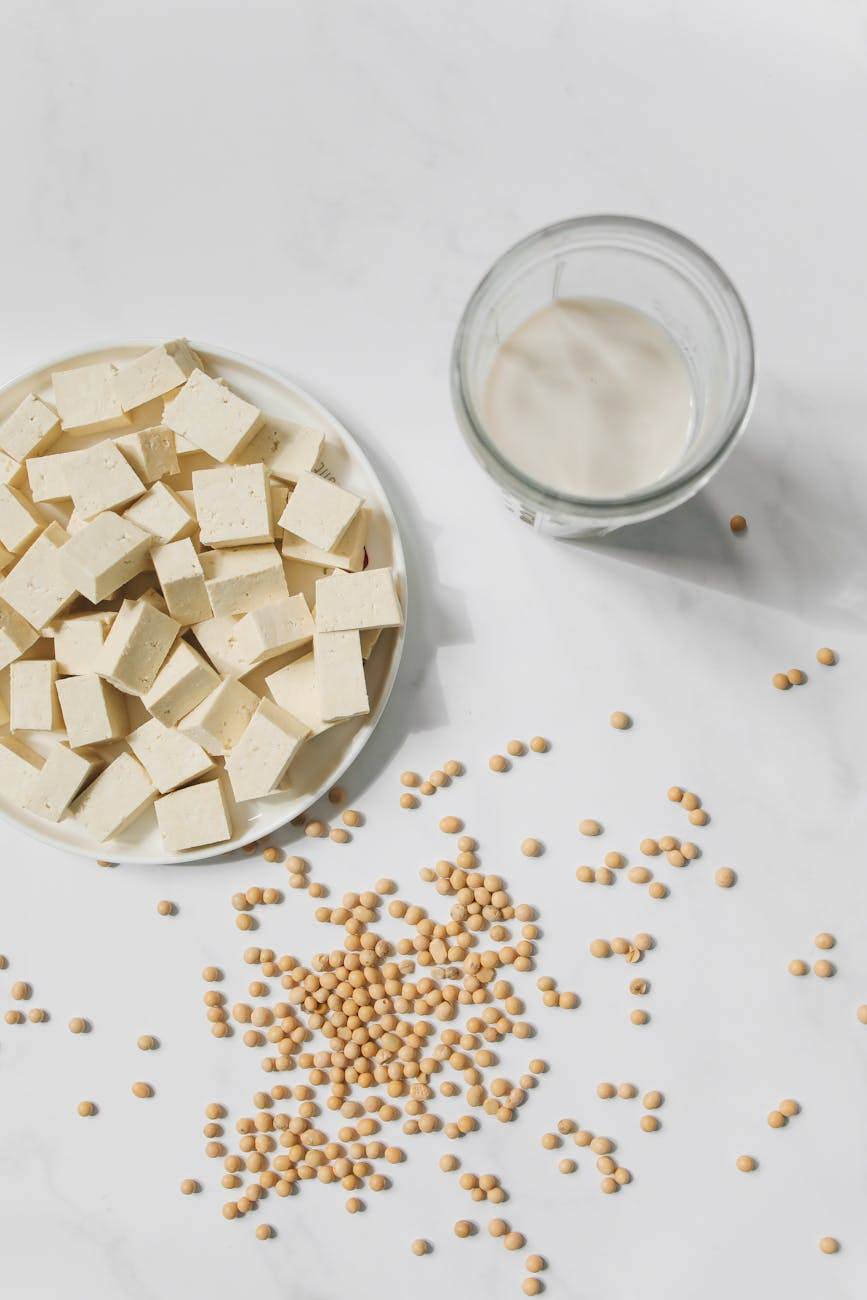The Raw Milk Rundown
Let’s dive into the great, white unknown of raw milk. Get ready to open your fridge doors to the world of unpasteurized, straight-from-the-udder liquid refreshment!
Defining Raw Milk
Like the name hints, raw milk is milk in its rawest form, untouched by the pasteurization process. It’s the milk equivalent of a wild stallion, free-roaming and untamed. It’s the Clark Kent of the dairy world, unprocessed and unheated, with all its potential powers intact. But just like Superman, it’s not without its Kryptonite.
Raw milk can be contaminated with pathogens even when sourced from clinically healthy animals (NCBI). So, while it’s tempting to go au naturel, keep in mind that not all that glitters is gold. Or in this case, not all that’s raw is risk-free.
Pros and Cons of Raw Milk
Raw milk enthusiasts rave about the unadulterated flavor and potential health benefits. Some suggest that raw milk is more nutritious, prevents lactose intolerance, or provides “good” bacteria (NCBI). However, recent scientific reviews have found no reliable evidence to support these claims. So while it might not be the superfood some claim, it certainly has a super fan base.
On the flip side, raw milk has been associated with outbreaks of foodborne illnesses (Healthline). It’s like a dairy-based Russian roulette, and the USDA, FDA, and Centers for Disease Control are not fans. They cite numerous studies demonstrating the risk associated with drinking raw milk. According to them, pasteurization effectively kills raw milk pathogens without any significant impact on milk nutritional quality.
So, if you’re considering joining the raw milk bandwagon, be sure to weigh the pros and cons carefully. If you’re a thrill-seeker, go ahead, take the plunge. But if you’re of the cautious kind, maybe stick to the tamer, pasteurized version. And if you’re still on the fence, check out our raw milk finder to explore some options for raw milk delivery. It’s the wild, wild west out there, folks! Stay safe and keep moo-ving!
Myths About Raw Milk
Cue the suspenseful music and grab your detective’s hat, because it’s time to debunk some myths and misconceptions about raw milk. Hold on to your cups, folks, because some of these might just curdle your milk!
Debunking Raw Milk Health Benefits
Now, there’s a bunch of chatter out there about the so-called “health benefits” of raw milk. Improved nutrition, prevention of lactose intolerance, provision of “good” bacteria – you name it, raw milk has been associated with it. However, recent scientific reviews, such as this one from NCBI, found no reliable scientific evidence to support these claims. Yep, you heard it right, folks! Just like a bad magic trick, these supposed benefits vanish under close scrutiny.
Here are a few popular myth-busters:
-
Raw milk cures lactose intolerance: Not so fast! Folks with lactose intolerance lack the enzyme lactase, which breaks down lactose during digestion. Raw milk contains lactose and can cause the same intolerant reactions in sensitive individuals. There’s no magical lactase in milk, raw or pasteurized (FDA).
-
Raw milk is more effective in preventing osteoporosis than pasteurized milk: No scientific literature has been found to substantiate this claim. So, it seems the bone of contention here is just a myth.
-
Raw milk contains beneficial bacteria for gastrointestinal health: Err, not really! The bacteria found in raw milk are typically not of human origin. The presence of bifidobacteria in raw milk indicates fecal contamination and poor farm hygiene.
-
Raw milk is an immune system-building food: Not so true either! In fact, children, who are typically more vulnerable than adults to pathogens, have been linked to multiple outbreaks of foodborne illnesses due to raw milk consumption (FDA).
Raw Milk and Disease Prevention
Now, moving on to another popular myth: that raw milk is a superfood that can help prevent diseases. Not only is this claim unsupported, but it’s also potentially dangerous. Raw milk can contain a variety of disease-causing pathogens (FDA). In fact, some studies have found that up to a third of all raw milk samples contained pathogens, even when sourced from clinically healthy animals or from milk that appeared to be of good quality.
US statistics show that dairy-associated outbreaks of human disease involving raw milk products resulted in 1571 reported cases, 202 hospitalizations, and 2 deaths (NCBI). So, as much as we all love a good superhero story, raw milk is not the caped crusader of disease prevention.
In the end, the safest bet is to consume pasteurized milk or seek out reliable sources for raw milk if you’re really keen on it. If you’re on the hunt for safe raw milk, our raw milk finder is here to help! Now, that’s something to moo about!
Laws and Regulations on Raw Milk
Navigating the labyrinth of raw milk regulations is like trying to milk a cow while wearing boxing gloves. It’s tricky, it’s messy, and you’re likely to end up with more on you than in the bucket. But never fear, dear dairy devotees! We’re here to help you understand the rules when it comes to your favorite creamy concoction.
US Raw Milk Laws
In the land of the free and the home of the brave, raw milk laws are as diverse as the country itself. Some states allow sales straight from the farm or through retail outlets, others permit herd share agreements, and some ban the sale of raw milk altogether. Talk about a mixed bag!
The good news? If you’re in a state where raw milk is as legal as apple pie, finding your favorite fresh-from-the-udder delight is as simple as clicking on our handy raw milk finder. Go on, give it a whirl. Your cereal bowl will thank you!
Canada Raw Milk Laws
Oh, Canada! Land of maple syrup, hockey, and…strict raw milk regulations. Yes, you read that right. In the Great White North, raw milk sales are outlawed nationwide. Tough luck for those yearning for a cold glass of unpasteurized moose milk, eh?
The sale of normal lacteal secretion obtained from the mammary glands of animals is prohibited under C.R.C., c. 870, Division 8, B.08.002.2 (1) (GetRawMilk.com). Quite a mouthful, that one. Long story short, if you’re in Canada and desperate for some raw milk, you might have better luck searching for a yeti.
But hold on to your toques, folks! There is some light at the end of the frosty tunnel. Hearings were held in November 2020 towards the legalization of raw milk. So, who knows? Maybe the tides are turning for our Canadian friends. Until then, you might want to stick to poutine and butter tarts for your dairy fix.
So there you have it – the skinny on raw milk laws in the US and Canada. Remember, folks, when it comes to raw milk, you have to know the rules to break the…wait, scratch that. Just follow the rules, okay? And if you’re looking for the cream of the crop in raw milk delivery, check out our super-duper raw milk delivery near me page. Happy milking!
Procuring Raw Milk Safely
Ah, the pursuit of raw milk – it’s not for the faint of heart, but for those who love a dairy challenge, it’s like finding the Holy Grail of the milk world. However, before you embark on your raw milk adventure, keep in mind that it’s not as simple as picking up a carton from your local grocery store. Here’s a guide on how to safely source your raw milk.
Choosing Reliable Sources
It’s time to put on your detective hat and do some sleuthing. You see, raw milk can be contaminated with pathogens even when sourced from clinically healthy animals. So, it’s crucial to find a reliable source for your raw milk delivery.
Your best bet? Local, small-scale dairies that are transparent about their practices. Visit the dairy, meet the cows (optional, but highly recommended for the full experience), and ask about their hygiene practices.
Use our raw milk finder to find a raw milk farm near you and check out the available organic raw milk options. It’s all about doing your homework, folks!
Considerations Before Purchase
Before you take the raw milk plunge, there are a few things you should consider. For one, it’s important to know that raw milk can contain harmful bacteria such as Salmonella, E. coli, and Listeria, which can cause foodborne illnesses.
Next, you need to know that the sale of raw milk is strictly regulated or even banned in many countries due to safety concerns. So, check the regulations in your area before setting your heart on a fresh-from-the-cow morning coffee.
Finally, remember that while raw milk is touted by some as a cure-all, it does not cure lactose intolerance or promote calcium deposition in the bones more effectively than pasteurized milk. And, those beneficial bacteria for gastrointestinal health you’ve heard about? They’re typically not of human origin (FDA).
So, keep your expectations in check, and enjoy the raw milk experience for what it is – an adventurous dairy journey, not a miracle cure. Now, off you go! Your raw milk delivery awaits!
The Journey of Milk
The road from udder to under your nose (that mustache looks good on you) is quite the adventure. It involves cool trucks, steel tanks, and, of course, our bovine friends. So, fasten your seatbelts and let’s dive into the roller-coaster ride that is the journey of milk.
From Cow to Processor
First things first, milk doesn’t just magically appear in a bottle or carton in your nearest grocery store. It starts off in the udder of a cow, in a place we like to call a raw milk farm.
Once milked, the fresh liquid gold is stored in refrigerated vats or silos, typically kept at a cool 39 degrees Fahrenheit or colder for no more than 48 hours. Why so cold, you ask? The milk is agitated to keep the whole volume cold and prevent separation of the milkfat. Sounds like a milkshake in the making! (ProCon.org)
Next, the milk embarks on a road trip in a special stainless steel insulated tanker. These aren’t your regular trucks, folks! They’re specially designed to transport the precious cargo without spilling a drop. The milk is pumped into the truck from a hose attached to the tank where the milk was kept chillin’. Once the truck is full, the raw milk begins its journey to the closest processing plant. Consider this your official raw milk delivery service (Alberta Milk).
As the person operating the milk truck has the vital job of being the first check to ensure that the milk meets the highest standards. They’re like the gatekeeper of quality, and they won’t pick up milk that doesn’t meet the standards. And here’s a fun fact for you: all milk in Alberta is pooled, so one truck carries milk from multiple farms. It’s like a party bus but for milk.
Pasteurization Process
Once the milk arrives at the processing plant, it goes through the pasteurization process. This involves heating the milk to a specific temperature for a set period of time. The aim is to kill any harmful bacteria that might be present and make the milk safe to drink.
After pasteurization, the milk is cooled and packaged into bottles or cartons, ready to be delivered to stores. From there, it makes its way to your fridge, ready to be poured into your morning cereal or coffee.
So there you have it, folks – the epic journey of milk, from the pastures of the farm to the comfort of your home. Whether you’re a fan of organic raw milk or prefer the pasteurized version, it’s clear that a lot goes into ensuring that the milk you drink is safe and of the highest quality. Now go forth and enjoy that glass of milk with newfound appreciation!
Alternatives to Raw Milk
So, you’ve scanned every nook and cranny of our raw milk finder, scoured every raw milk farm, and even considered organic raw milk, but you’re still not sold on the idea of guzzling down a glass of the fresh, unpasteurized stuff? Fear not, dairy devotees! There’s a whole world of milky alternatives out there that won’t have you playing Russian Roulette with your digestive system.
Pasteurized Milk Overview
First up in the dairy lineup is the most popular player: pasteurized milk. Pasteurized milk is regular old cow’s milk that’s been heated and cooled in a process that would make Louis Pasteur (yeah, the guy they named it after) proud. This process gives the milk a good old germ-kicking, making it safe to drink before it’s packaged and sent off to grocery stores (GonnaNeedMilk.com).
Now, don’t let the word “process” scare you off. Pasteurization is as natural as baking a cake, and a good deal safer than trying to eat raw eggs. Different methods like Vat pasteurization, High Temperature Short Time (HTST) pasteurization, and even Ultra Pasteurization (UT) are used to ensure that any bacteria that could make you sick are sent packing (GonnaNeedMilk.com).
And let’s clear the air about something else: pasteurized milk is not the villain in a nutritional comic book. Studies have shown that pasteurization has minimal impact on milk nutritional quality. That means you’re still getting all the good stuff like protein, fatty acids, minerals, and vitamins, without the risk of a foodborne illness (FDA).
Other Dairy Products
If you’re still not convinced, there’s a dairy world beyond raw and pasteurized milk. Perhaps you’d like to delve into the realm of cheese, yogurt, or even kefir? Or maybe butter is more your spread? Whether you’re looking for something creamy, crumbly, or somewhere in between, there’s a dairy product out there for you!
While these alternatives may not deliver the same raw milk rush, they offer a way for you to enjoy the benefits of milk without the potential risks associated with raw milk. So whether you’re a die-hard raw milk enthusiast or a pasteurized milk fan, remember, there’s a whole world of dairy out there to explore. Happy milking!




Leave a Reply